I am curious what methods are most suitable for securing PCBs. I have a large PCB which is fixed to a sheet metal enclosure using #4-40 x 1/4" stainless steel screws. The receiving end is a #4-40 captive standoff (PEM product). Initially I was not doing anything to prevent the screws from vibrating out. Sure enough, I started getting complaints that the screws were backing out just during shipping alone. So, I started to use a loc-tite product. This works well, but it's very labor intensive to put a drop on each screw. I have not used a lock washer as it tears up the PCB. Any suggestions?
-
Can you add what the screws are made of and what they are screwing into? – Cybergibbons May 04 '12 at 06:56
-
I have edited the question to provide that info. – Jason May 04 '12 at 07:00
-
And using self-blocking screws (with the plastic coating), or locking rings? – clabacchio May 04 '12 at 07:18
-
Just standard stainless steel screws with loctite at the moment. – Jason May 04 '12 at 07:19
-
2Star washers definitely tear into the PCB. Spring washers less so. You may suggest that layout designers keep traces clear of mounting holes in future. Brushing locktite/nail polish on the screw heads after insertion takes less time than putting washers in. – May 04 '12 at 07:33
-
2Internal tooth lockwashers should be fine. Yes, these will dig into the PCB a little, but there shouldn't be any traces near the holes anyway. Didn't you define a keepout area around all your holes that is the size of a screw head or nut with a little exra? – Olin Lathrop May 04 '12 at 11:49
-
2@Jason: maybe you could use a magnetized bit driver to hold the screws, and a pot of loctite to dip them into before screwing them in? Seems that you'd end up with a fluid "load, dip, drive" motion. – Bryan Boettcher May 04 '12 at 15:42
-
@insta I like that idea. I'd have to move away from stainless steel screws though. – Jason May 04 '12 at 22:55
3 Answers
Crinkle washers (aka wavy washers) do the same job as shakeproof/star washers and don't damage the PCB. They can also be removed and re-tightened more often than star washers without degradation.

- 5,348
- 15
- 20
-
1Jason, you've accepted this answer as correct. Can you confirm use of these washers solved the problem (i.e. no more complaints)? – Garth Oates May 06 '15 at 13:16
There are a bunch of options. You are encountering the "Quality costs money" paradigm that shows up in production. In production it is also super important to make decisions - not on how something seems but on actual measured results.
Perhaps brushing the heads of the screws with locktite seems labour intensive. But if you measure the time/cost for an assembler to do this it may be less expensive than your alternatives.
Now it sounds like you've got pem inserts pressed into bent metal. There are plastic inserts that have tangs for capturing the board. They have a wide base and press in through a hole in the metal and use tangs for stability on the metal side. The plus side: no screws or screw drivers. Low assembly cost. Down side: its hard to design them in after you've gone to production with metal pem insert design. Maybe next time.
Another option is self tapping screws into the metal with plastic tube standoffs. A bit tricky to assemble.
Another option is self tappers into plastic inserts. These are smaller profile than the snap-in inserts above, and still require screws and screw drivers. But you might get away with them after going to production.
Use self tappers where you can. They bite in for good retention. And anything threaded adds cost to the piece parts. Better yet - use snap-ins.
Torque spec. Use a torque screw driver when inserting the screws, whether pneumatic, electric, or hand driven. Figure out the best torque setting and use it. The screws shouldn't be backing out that much that often that early if they are torqued in.
All that: maybe a quick brush with locktite doesn't cost that much.
Remember: "Quality costs money."
-
-
Torque depends on screw and PCB. You should be able to find an JEDEC, ASTM or ANSI spec. I can usually tighten it by feel and then measure it with a torque screwdriver. But that's only because I don't have the spec. – May 04 '12 at 10:48
-
1@Jason Refer to IPC-A-610 which talks greatly about 'best practices' for manufacturing of electronic assemblies. – Adam Lawrence May 04 '12 at 12:22
You may also consider PEM SNAP-TOP Standoffs or similar? They install into steel metal and there are no loose parts to drop.
I personally err away from crinkle washers etc; they've been proved to be mostly useless and in some cases detrimental. See NASA Reference Publication 1228, Fastener Design Manual for more information.
- 326
- 1
- 3
- 9